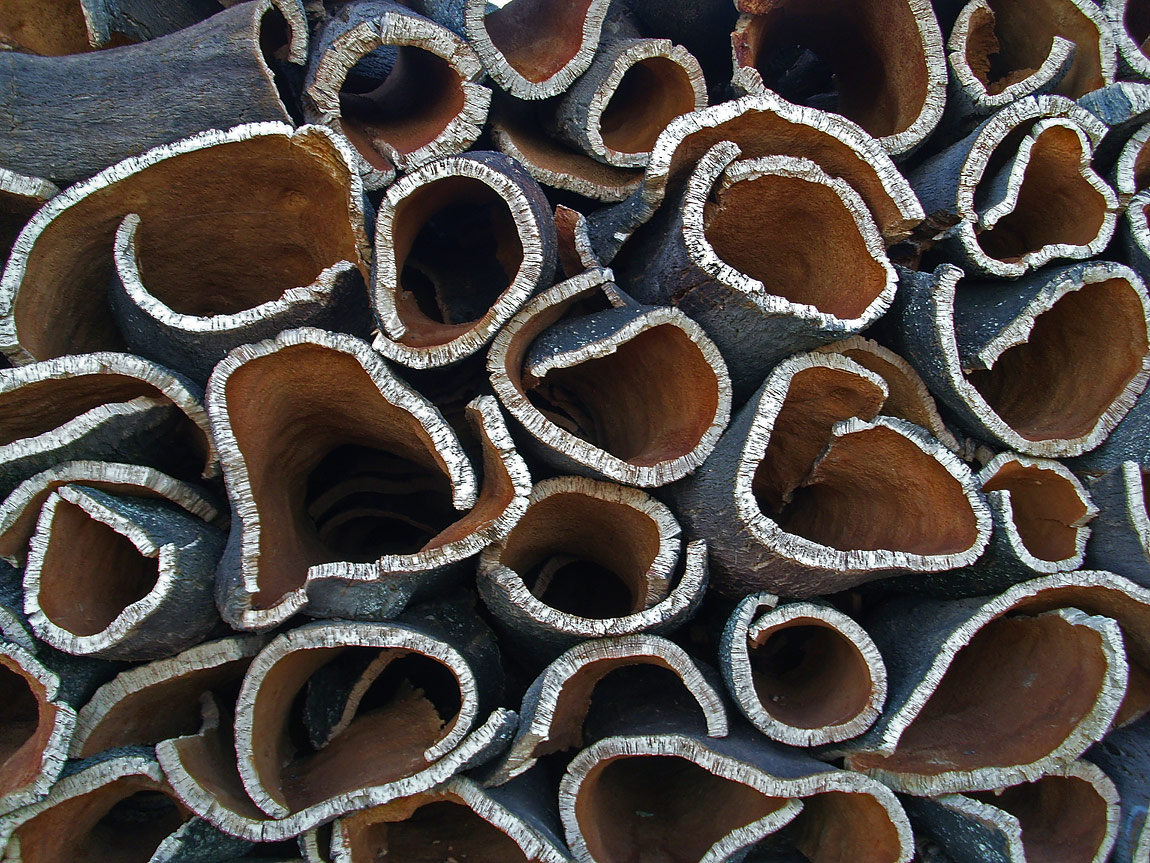Cork, a material extracted from the bark of the cork-oak (Quercus suber), observed under a microscope in 1665 by Robert Hooke (!), is an extraordinary raw material due to its lightness, insulating power and resistance and used in many industries and craftwork.
Portugal produces more than half of the world's production. The extraction of cork from the tree takes place in the summer. It is manual work done with an axe by highly specialized and sought-after workers that requires great skill and precision to avoid injuring the tree.
The cork boards are usually stored outdoors until they are taken to the factories (nowadays, not so much due to robberies - raw cork plates sell for around 2 euros per kilo!).
In August 2008, I was walking through the Serra do Algarve and came across this scene of cork boards stacked and stored outdoors. The inner side of the plate is brown, the outer side is grey, and the edges are light grey. What a wonderful scenery (and small-landscape)!


